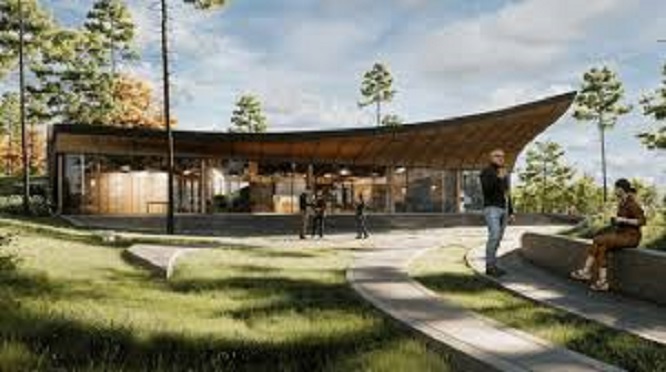Architectural visualization has come a long way, hasn’t it? Remember the days when showing clients your ideas meant using basic sketches or static CAD renderings? Useful, sure, but not exactly inspiring. Well, if you’re ready to elevate your design game, enter Chaos Enscape. This real-time rendering and virtual reality plugin is changing how architects, interior designers, and even urban planners bring their ideas to life. If you’ve been on the fence about trying it, stick around—I’m about to break down how Chaos Enscape can completely transform your workflow.
Revolutionize Your Workflow with Chaos Enscape
Chaos Enscape bridges the gap between envisioning and presenting architectural designs. But what makes it so significant? This plug-in integrates seamlessly with industry staples like Revit, SketchUp, Rhino, ArchiCAD, and Vectorworks. The truly magical part? While you design in your preferred software, Enscape renders photorealistic visuals in real-time. Think of it as designing and walking through your project simultaneously. You tweak a window placement in Revit, for instance, and instantly see how natural light changes in your virtual walkthrough. It’s literally like wearing a turbocharged jetpack for your creativity.
Now imagine explaining those qualities to a skeptical client who just doesn’t get the vision (we’ve all been there). With Chaos Enscape, you don’t just tell them what their future office or home will look like; you take them on a virtual tour through it. No more static images, awkward sketches, or long-winded explanations. You hand them the reins of a guided 3D experience. Talk about a moment of “Wow.”
What Makes Chaos Enscape a Must-Have?
Not convinced it’s worth squeezing into your current toolkit? Here are some of its defining features, which feel less like “features” and more like game-changing superpowers:
- Real-Time Rendering: Gone are the days when rendering took hours (or even days). Need an instant update? Done.
- Virtual Reality Capability: Hook it up to a VR headset, and voilà, clients can literally step into their future space. It’s next-level immersive.
- Seamless Integration: No steep learning curve here. If you’re already using tools like SketchUp or Revit, Enscape meshes with your workflow effortlessly.
- Detailed Asset Library: Plants, furniture, people, vehicles… the list goes on. You’ll spend less time hunting for assets and more time designing.
- Global Illumination: Get those perfect natural light effects and shadows without finicky manual adjustments.
Simply put, Chaos Enscape makes renderings faster, visuals sharper, and presentations downright engaging.
Getting Started with Chaos Enscape Step-by-Step
Here’s where the magic really begins. If you’re wondering how complicated getting started might be, relax. Enscape is ridiculously user-friendly. Here’s how you can kick off your first project:
- Install the Plugin: Free Download Chaos Enscape, and voilà! It integrates directly with your design software. No extra hoops to jump through.
- Set Up Your Design Scene: Open your project in SketchUp, Rhino, or whichever platform you prefer. Ensure that your geometry and basic textures are in place.
- Launch Enscape: Hit the “Start Enscape” button. Watch your project transform into a 3D environment within seconds.
- Tweak Settings: Adjust lighting, textures, and materials to get a feel for the tools. Don’t worry, the interface is super intuitive.
- Export Visuals: Once happy, you can export screenshots, videos, or even 360-degree panoramas. Don’t forget about VR walkthroughs if that’s part of your pitch!
See? This isn’t rocket science. Enscape’s learning curve feels more like a learning ramp with a gentle slope.
Advanced Techniques for Realistic Rendering
By now, you’ve probably grasped the basics, but Chaos Enscape’s advanced tools are where things really sparkle. Try these techniques to take your visualizations to elite status:
- Play with Materials Settings: Don’t just settle for default textures. Experiment with reflectivity, roughness, and transparency to achieve hyper-realism.
- Master Lighting: Leverage Enscape’s global illumination feature. Adjust brightness for natural sunlight or artificial interior lighting to set the right atmosphere.
- Camera Path Animation: Want to showcase your design dynamically? Create smooth flythrough animations to take your clients on a guided tour.
Optimizing Your Workflow with Chaos Enscape
Here’s something every designer knows too well. Efficiency is key when you’re juggling deadlines, projects, and micro-managing details (we’ve all been there). Enscape’s intuitive features streamline repetitive tasks and speed up iterations, leaving you with more time to focus on creativity. Here are ways you can optimize your workflow:
- Develop template views and settings for common project types (residential vs. commercial).
- Use batch rendering to output multiple views or sections at once.
- Collaborate efficiently by exporting interactive standalone files for clients or team members to review.
Chaos Enscape vs. Other Rendering Tools
Okay, this is the elephant in the room. How does Chaos Enscape fare against popular alternatives like Lumion, Twinmotion, or V-Ray? Let’s break it down:
Chaos Enscape: Seamless integration, real-time updates, perfect for those short on time but big on impactful visuals. Best suited for architects and designers wanting rapid results.
Lumion: Known for advanced animation and landscape rendering, but it has steeper hardware demands and doesn’t integrate as directly with design software.
Twinmotion: Strong competitor for real-time visualization, but lacks Enscape’s slick simplicity in rendering lighting or materials.
V-Ray: Ideal for high-end photorealism, but prepare to invest serious time and effort. It’s more suitable for visual artists than architects.
Essentially, Enscape’s sweet spot is efficiency, simplicity, and razor-sharp visualization in real time.
Real-World Projects That Bring Chaos Enscape to Life
Enscape is at its best when it’s showing off. From commercial skyscrapers to cozy interiors, here are examples of where it truly shines:
- Residential lofts featuring ultra-modern furniture and textured lighting.
- Urban planning visualizations, showcasing neighborhood layouts under dynamic weather conditions.
- Hospitality designs like restaurants or hotels, brought to life with perfect interior lighting and styling.
Insider Tips for Stunning Visualizations
You’re almost there! Before you hit the “export” button, check out these practical tips to make your renders jaw-dropping:
- Stick with a balanced color palette to avoid oversaturation.
- Use human-scale objects in your renderings for reference and relatability.
- Test your design in VR—even minor adjustments can make massive differences when experienced firsthand.
Resources to Keep Learning
Want to dig deeper or master advanced tricks? Explore the following resources available online:
- Official Enscape Blog: Tutorials, updates, and tips straight from the creators.
- YouTube Channels: Look up creators like “SketchUp Essentials” or “The Rendering Guru” for in-depth demos.
- User Forums: Engage with other designers and architects who share insights, assets, and advice.
Why Chaos Enscape is a Game-Changer for Architects
If you’re still waiting for a sign to try Chaos Enscape, this is it. It’s not just software; it’s a tool designed to make your creative vision come alive with speed, precision, and flair. Whether you’re chasing tight deadlines or looking to create visuals that genuinely wow, Enscape delivers every single time.

Oliver Smith is an experienced blogger at Grammar Globe, Oliver Smith, an expert in English grammar and a master of wit, brings language to life with his playful take on puns. Through his works, he weaves humor into the rules of grammar, making learning fun and engaging for readers of all ages. Discover language with a smile!”






